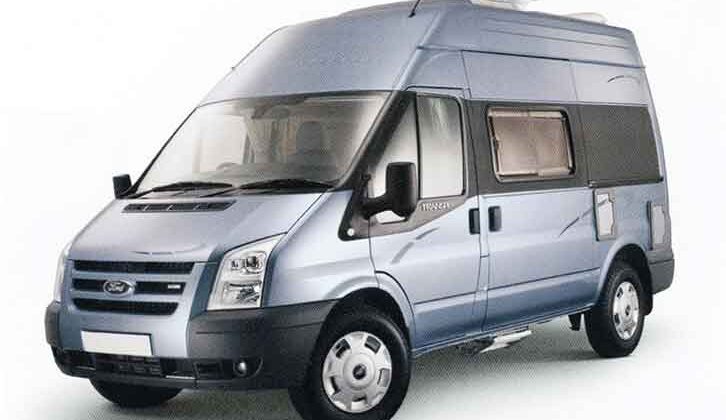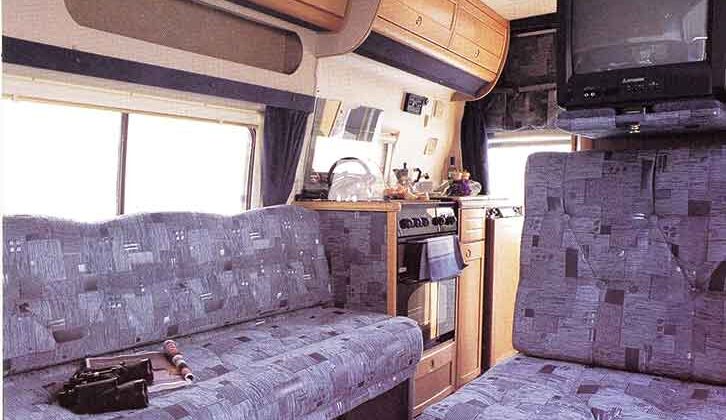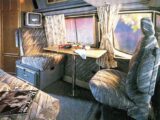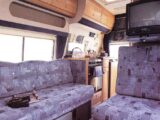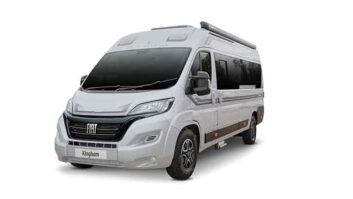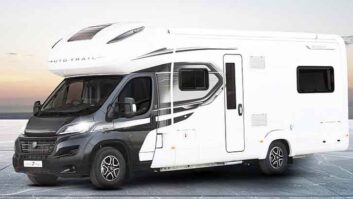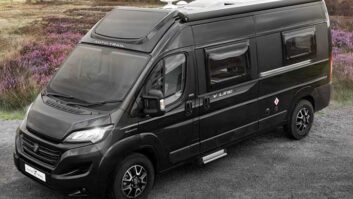The Auto-Sleeper Duetto was first launched as an alternative to the brand’s popular Peugeot-based Auto-Sleeper Symphony, and to satisfy those who wanted to be behind the ‘blue oval’, plus have the option of automatic transmission.
The brand is the longest established volume converter of motorcaravans in the UK, and as a result, it’s not surprising to see Auto-Sleepers appear in our best used campervan guide thanks to the Auto-Sleepers Air. Commencing in earnest back in 1961, since then, they have continuously converted panel vans, both with elevating-roofs and high-tops.
The Duetto range sold in huge numbers on the earlier long-wheelbase version, but when Ford launched its Mk 3 Transit in 2001, it transferred to the new medium-wheelbase derivative.
This wasn’t as popular – a bit strange really, because it was only a few inches shorter and had less tumblehome sides than its predecessor, so actually offered a similar volume of internal space.
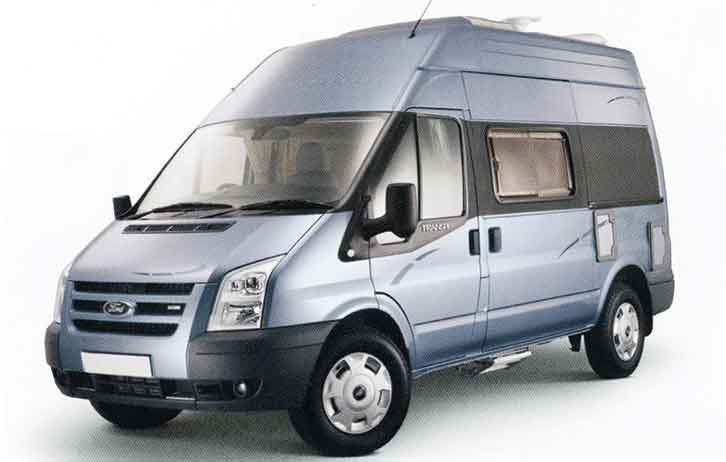
There were a couple of alternative motorhome layouts built as prototypes, but neither made it into production, principally because the original was so practical and easy to live in.
Entry into the habitation section from outside was usually achieved via the side sliding door. If the beds were made up, the rear doors could be used – handy in case of emergency, or for loading and unloading mobility scooters, jetskis and so on, and the type of thoughtful addition the best campervans provide.
The lounge consisted of swivelled cab seats, a nearside face-forward travel seat, and an offside inward-facing settee. These were ahead of a linear offside kitchen, nearside wardrobe, and rear-corner washroom with shower tray, mixer taps, toilet, tip-up basin, window and rooflight.

At launch, the upholstery was panelled and buttoned, using quality deep-pile fabrics. In addition, the cabinetwork was scratch-built by skilled operatives, with traditional hardwood-framed doors and drawers featuring throughout.
Dual-fuel space and water heating were standard, and all of the habitation windows boasted cassette blinds and flyscreens. Following is a frequently used description – but it is particularly appropriate for the Duetto: “It’s a panel van that thinks it’s a coachbuilt.”
Motive power originally comprised a choice between the 114bhp petrol engine or a 2.5-litre diesel at either 75bhp (naturally aspirated) or 100bhp (turbocharged). All long-wheelbase models were rear-wheel drive, most via a five-speed manual gearbox.

A four-speed torque-converter automatic was only available linked to an 80bhp nat-asp diesel engine.
When production transferred to the third-generation (medium-wheelbase) Transit in the early 2000s, the new Duratorq turbodiesel engine became standard, originally available at 90bhp and 125bhp, but later upgraded.
Initially, there was no two-pedal drive option on the new generation, but Duratorq (robotised manual gearbox) was briefly available from late 2003.
The default accommodation for the somnolent numbered two, but if it was specified at the time of ordering, an additional pull-out double bed replaced the overcab storage locker.
Although the Duetto could now sleep four, most opted to retain the offside settee, so there were only three travel seats. The beds in the long-wheelbase models were designed to be made up in a jiffy, either as an all-over double bed or as two easy-access singles, all without involving the cab seats.
In later medium-wheelbase derivatives, the only official option was an all-over transverse double. However, if one used the (swivelled) cab seat squabs for one’s feet, two single beds were possible.
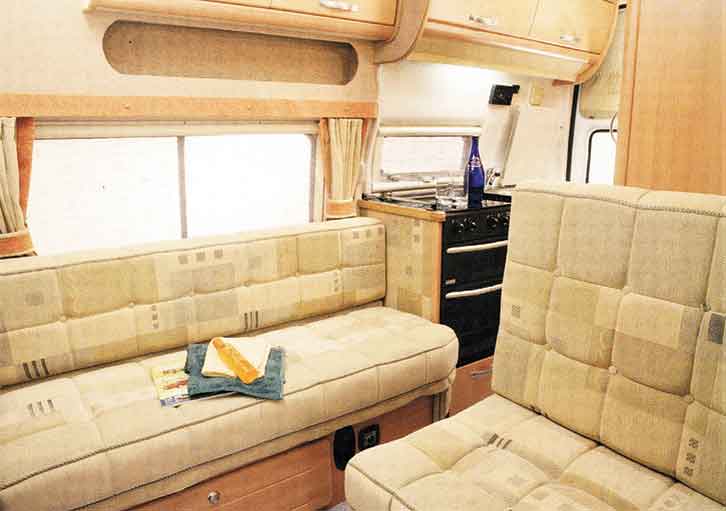
Ford Transit-based ’vans are a smart choice for those buying older vehicles and/or looking at long-term ownership. The principal reason is the brilliant availability of new old stock, pattern, and salvage spares.
What to look out for in an Auto-Sleeper Duetto
Base vehicle
LWB: As always, a full motorhome MoT would be a bonus, but those with welding skills looking for a fixer-upper could do well to consider buying without one.
Be aware that earlier Duetto models were a popular feeding ground for the tin worm. Areas commonly affected by corrosion include the inner and outer wheel-arches (especially where they join the floor), cab door stepwells and the bottoms of all doors. Affordable repair panels are widely available.
MWB: Listen carefully for any clatter following engine switch-off – this is indicative of imminent dual mass flywheel failure.
Conversion
Duetto motorhomes were always built up to a specification, not down to a price, so the cabinetwork should all be in very good order.
Check for damp ingress (rare). Try all third-party fittings that will wear over time, such as blinds and flyscreens.
Keep some ‘folding’ in reserve for the inevitable replacement of white goods.
Arrange for a qualified motorcaravan habitation engineer to inspect all gas and electrical systems.
Make sure that the fire-extinguisher is in date, and the smoke detector is working as it should, and consider fitting a carbon monoxide alarm.
Our pick
Buy the best available within your budget, not the newest. I have driven Durashift automatic examples and found them to be good, but not quite as smooth as a torque-converter automatic. It was withdrawn because of a change of policy on ambulance fleets that were so equipped.
What to pay for a used Auto-Sleeper Duetto
LWB versions frequently available from £10,000; MWB versions from £20,000. That said, the prices of all pre-owned ’vans are now softening a little from the artificially high ‘Covid’ prices.
Duetto essentials
- Auto-Sleeper Duetto on long- and medium-wheelbase Ford Transit
- Built in Willersey, Broadway, UK, 1994-2010
- Five-door high-top panel van conversion
- Overall length: 1994-2000: 5.55m (18’ 2.5”)
- Overall length: 2001–2010: 5.45m (17’ 10.5”)
What we like:
- Easy to find
- Affordability
- Practicality
- Spares availability
What we don’t like:
- Early models prone to body corrosion
- Nat-asp diesel models a bit pedestrian
Alternatives to an Auto-Sleeper Duetto
The Lunar Landstar provides motorhomes with layouts that were carefully thought out, both in form and function. Then there are the Westfalia Club Joker and Club Joker City, two different types of ‘van, despite sharing the Club Joker moniker.
- Thinking of carrying out your own conversion? Then find out about the couple who went about converting a double decker bus.
If you’ve enjoyed reading this article, why not get the latest news, reviews and features delivered direct to your door or inbox every month. Take advantage of our brilliant Practical Motorhome magazine SUBSCRIBERS’ OFFER and SIGN UP TO OUR NEWSLETTER for regular weekly updates on all things motorhome related.

